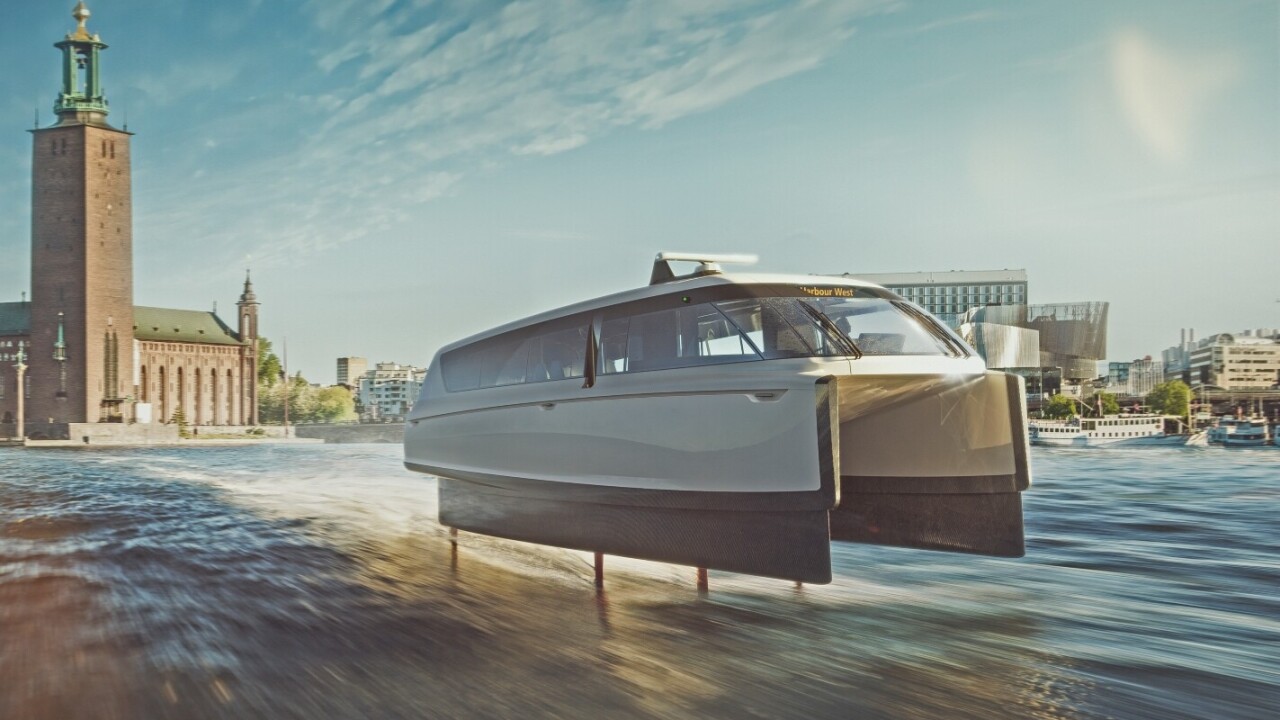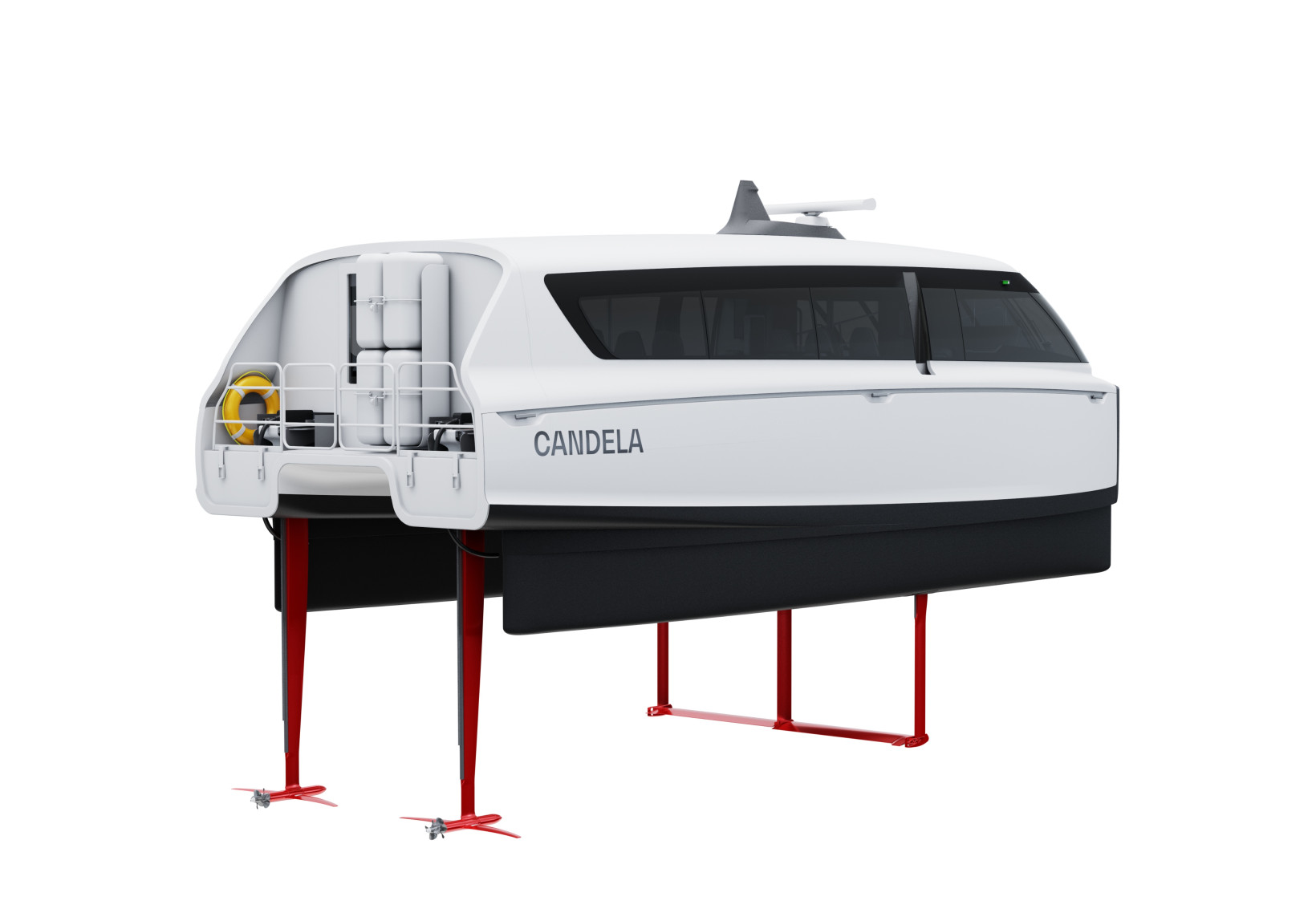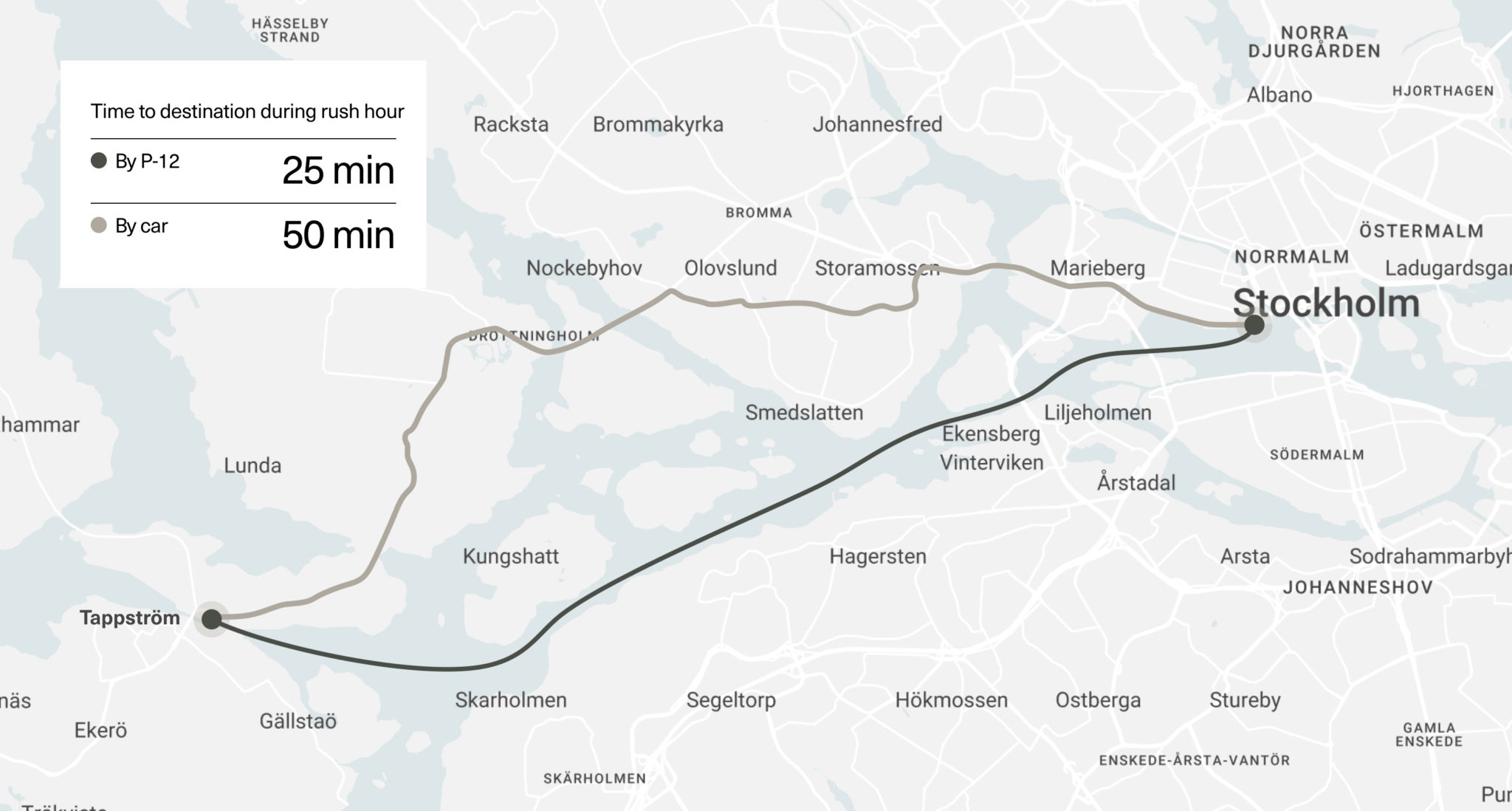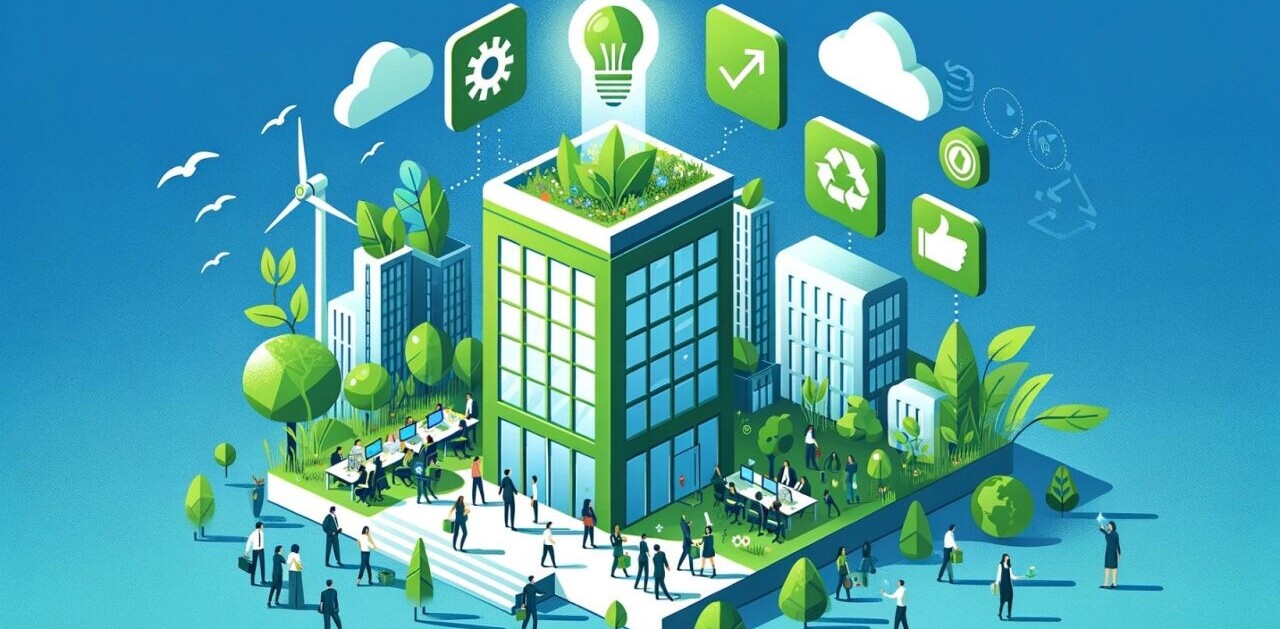
Is it a boat or is it a plane? Put your glasses on! This is clearly an electrically-powered hydrofoil passenger ferry.
The brainchild of Swedish startup Candela, the P-12 Shuttle is set to become the fastest and longest-range electric passenger vessel in the world when it launches this summer.
Founded in 2014, Candela has spent years perfecting its design on recreational boats, and now, fuelled by a $20m cash injection, is looking to scale up production and bring hydrofoil passenger boats into the mainstream.
The startup is currently building the first two vessels at its new factory in Stockholm, and is in discussions with 180 potential operators around the world, it told TNW in a written statement.
Hydrofoils function similarly to aeroplane wings. As the water flows over the surface of the foil it creates an upwards force, lifting the boat out of the water. This doesn’t just look cool, it reduces drag and allows the boat to travel faster. It also makes the craft more energy efficient.
However, electric hydrofoil boats are inherently unstable. To overcome this problem, Candela spent five years developing computer-controlled hydrofoils that adjust 100 times-a-second using data from sensors that gauge wave height and wind speed. This balances the boat and reduces seasickness — the unsavoury side of many seafaring journeys.

Candela claims that the P-12 Shuttle will have a top speed of 30 knots (55km/h) and a range of 110km on a single charge. What’s more impressive is that it is slated to use 80% less energy than traditional vessels, slashing emissions. A recent analysis by the Royal Institute of Technology (KTH) in Stockholm showed that the shuttle emits 97.5% less carbon dioxide over its lifecycle than an equivalent diesel vessel.
Lars Jörnow, Partner at investor EQT Ventures, which co-led the funding round, believes the P-12 offers a “climate friendly and low-cost” solution that will be a “game-changer” for passenger water travel.
Candela hasn’t just attracted investors, but city planners, too. In 2021, the startup signed a deal with the Swedish Transport Administration to build and trial the shuttle as a potential replacement for Stockholm’s fleet of 60 diesel ferries.
The government has financed half of the project, with Candela covering the other half. The partners look to complete the P-12 at the end of 2023, and begin trialling the vessel in 2024, to connect the rapidly expanding suburb of Ekerö and the city centre.
Ekerö residents currently have to undertake a 55-minute trip by bus, subway, or conventional ferry. The Candela P-12 Shuttle will cover the 15km route in 25 minutes — saving commuters 50 minutes a day.
Maritime traffic is already Stockholm’s most popular public transport, but the current fleet is outdated and a significant source of emissions, says Gustav Hemming, vice president of the Regional Executive Board in Stockholm.
“There’s a broad political support to replace more ferries in Stockholm, as the acting politicians’ outspoken goal is not only to reduce emissions from current vessels, but also transfer commuting from land-based to waterborne traffic,” Candela told TNW. The shuttle’s flying ability and subsequent lack of wake have allowed it to gain an exemption from Stockholm’s 12-knot river speed limit.

“Opening up urban waterways for high-speed electric transport can revolutionise commuting in cities such as San Francisco, Seoul, or Amsterdam – at a very low cost,” said Gustav Hasselskog, the founder and CEO of Candela. “There’s no need to build new infrastructure.”
In addition to city commuting, Candela envisions inter-city and even international travel. On Sunday, it made the first ever high-speed crossing in an electric vessel between Malmö, Sweden, and Copenhagen, Denmark. According to company spokesperson Mikael Mahlberg, the trip took just 30 minutes and cost €3 in electricity.
Key to Candela’s viability, it says, is affordability. “Most traditional battery powered or hydrogen vessels not only lack the speed and range of diesel vessels they’re intended to replace, but they’re also very expensive to purchase and operate,” Candela told TNW.
Since conventional high-speed vessels use so much energy, they require large battery banks and charging infrastructure at the dock. Thanks to its hydrofoil tech, the P-12 uses much smaller batteries that can be charged using less expensive infrastructure.
Candela’s biggest challenge now is scaling up production to meet demand, said its CEO. Across the coastal and urban segments of vessels, Candela estimates the total addressable market for their electric watercraft to be almost €30bn.
From London to Copenhagen to Amsterdam, many of the world’s biggest cities are water-based, making electric ferries an attractive option for clean, efficient transport.
Sweden’s neighbour Norway is considered to be leading the charge on electric ships globally, with over 60 electric ferries in operation, out of its total fleet of 200.
Earlier this year, shipping was added to the EU’s Emissions Trading System (a ‘cap-and-trade’ system that limits the amounts of emissions per sector), which should accelerate the electric ship transition.
Currently, in the EU, passenger ferries are responsible for 7% of shipping emissions, making up 0.2% of the bloc’s total emissions.
Get the TNW newsletter
Get the most important tech news in your inbox each week.




